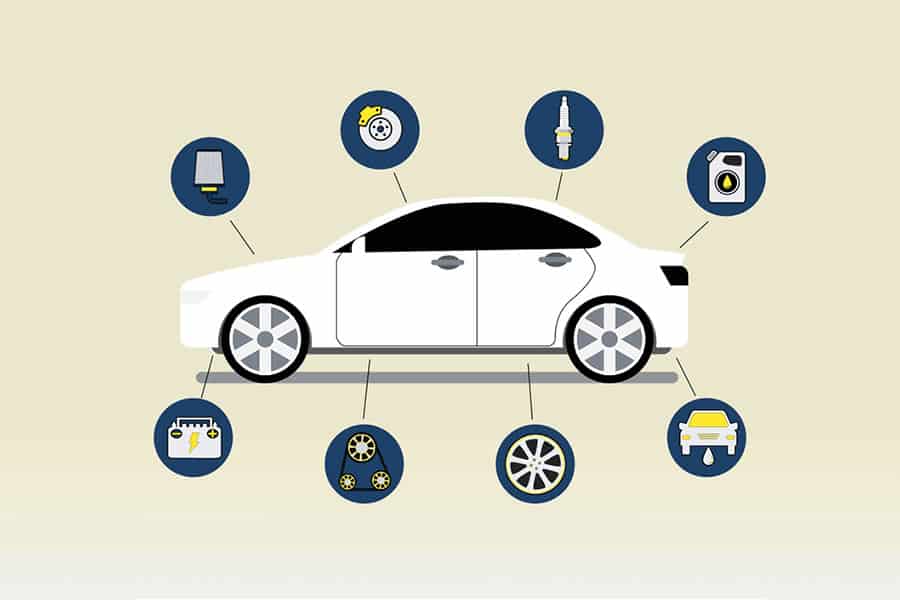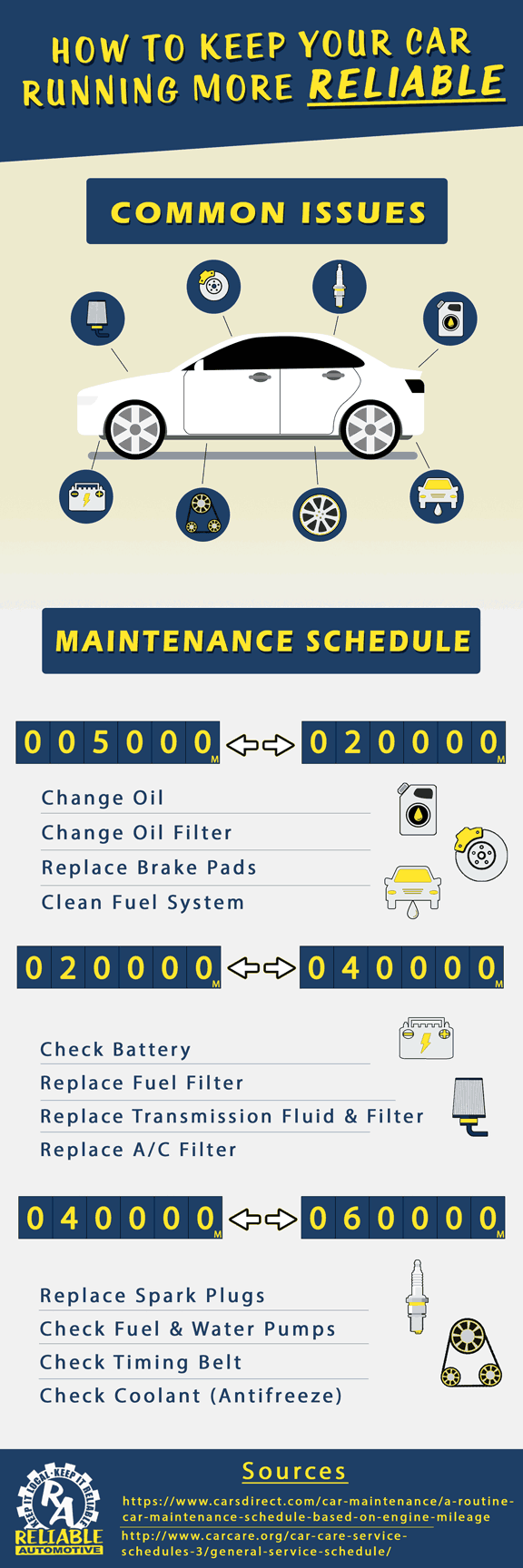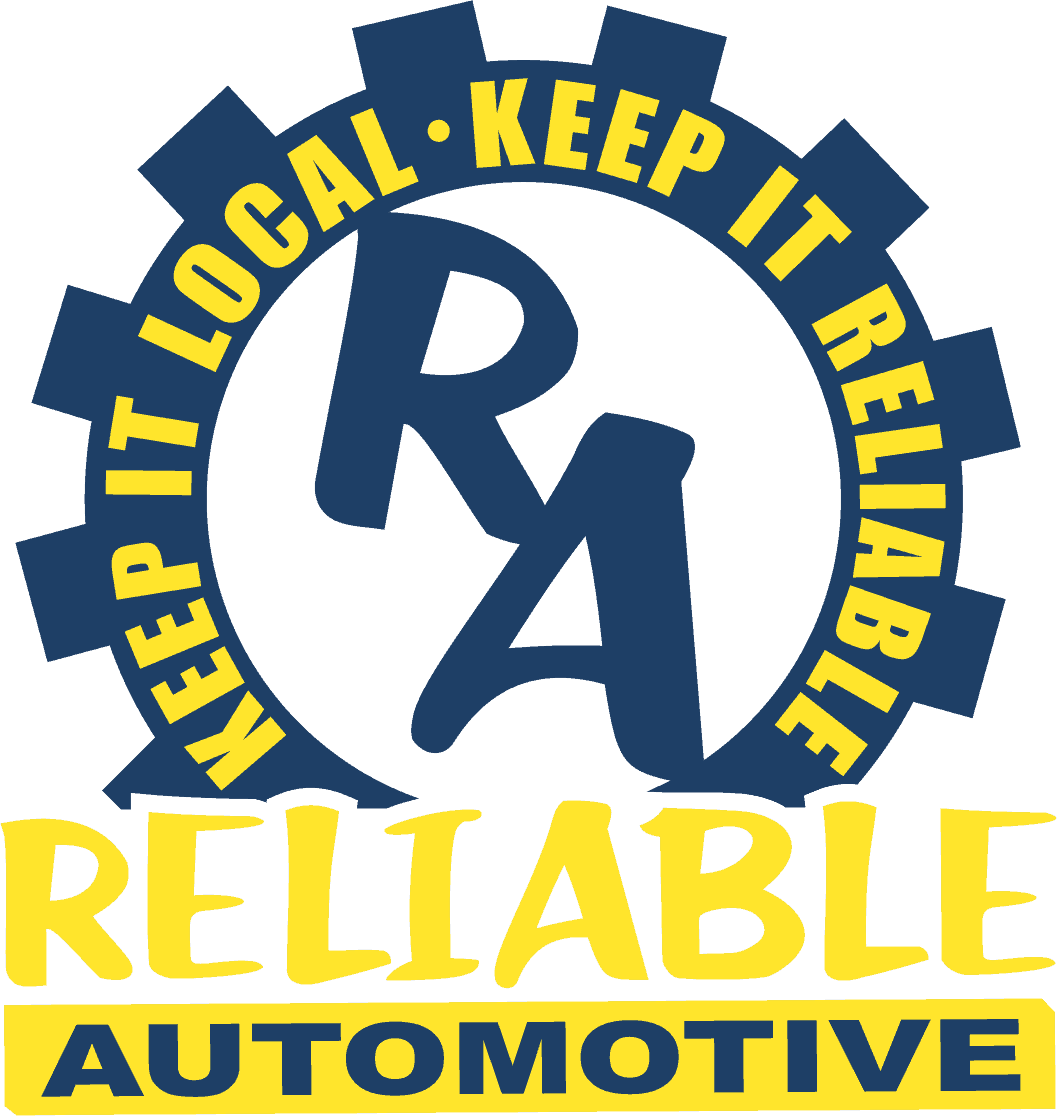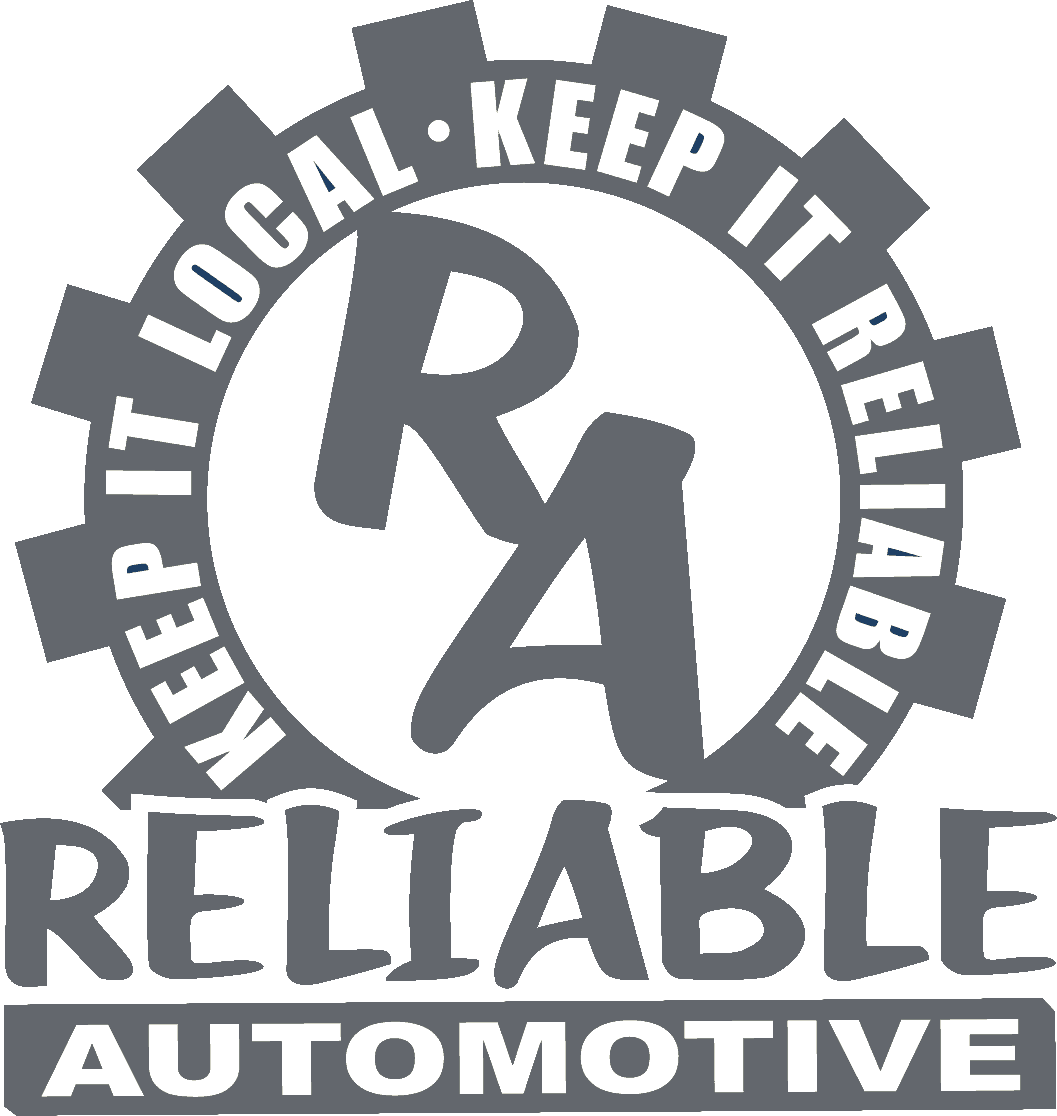
It’s inevitable that a vehicle’s parts will begin to deteriorate and need replacing as they age. Spark plugs and filters need replacing, fluids need refilling, tires need rotating, and many more systems need to be checked on regularly. By staying on top of the little things with a good maintenance schedule, however, you can prevent costly reactive repairs down the line and greatly extend your vehicle’s life span.
It’s never too late to begin regular vehicle maintenance, but sooner is better. To help with this goal, we’ve put together a handy infographic with a suggested maintenance schedule for the first 60,000 miles. While many of these tasks can be performed yourself, it’s always best to consult with a professional mechanic to go over your vehicle’s individual needs and ensure that all tasks are performed safely and properly.
If you’d prefer to read the infographic in text form, scroll below the image for a more detailed breakdown.

Common Issues
One of the challenges of vehicle maintenance is the fact that different vehicle parts wear down and need replacing at different rates. Some parts only need to be checked on a few times in a vehicle’s life span, while others need tuning up at regular mileage intervals. Below, we’ve put together a list of common issues that are likely to come up as your vehicle ages.
- Transmission Fluid & Filter should be replaced every so often to ensure no dirt or foreign particles build up in the transmission system.
- Brake Pads should be replaced regularly to prevent the break drum itself from being exposed and wearing down.
- Spark Plugs should be replaced from time to time to prevent misfires or more serious engine problems.
- Oil & Oil Filter need replacing regularly, as dirt can build up in the oil quickly.
- Battery should be regularly checked for proper voltage and to make sure that no corrosion has taken place.
- Timing Belt should be checked to make sure there are no nicks, tears, or other weak points.
- Tires need regular rotation and replacement as necessary.
- Fuel System needs to be checked on and flushed from time to time to keep dirt build-up to a minimum.
Maintenance Schedule
Now that you’re familiar with a few common points of failure, we’ll go over suggested maintenance tasks for your vehicle’s first 60,000 miles. Keep in mind that this schedule should only be seen as a suggested starting point, as every model of vehicle is different. Refer to your owner’s manual or consult with a professional mechanic for more accurate details on maintaining your specific model.
5,000–20,000 Miles
- Change Oil
- Change Oil Filter
- Replace Brake Pads
- Clean Fuel System
20,000–40,000 Miles
- Check Battery
- Replace Fuel Filter
- Replace Transmission Fluid & Filter
- Replace A/C Filter
40,000–60,000 Miles
- Replace Spark Plugs
- Check Fuel & Water Pumps
- Check Timing Belt
- Check Coolant (Antifreeze)
We hope you find this infographic to be helpful! While we’ve only gone into the first 60,000 miles here, always remember that maintenance is an ongoing part of any vehicle ownership. As your vehicle ages, the number of parts to check on and replace only increases. By beginning maintenance early, however, you can help prevent more costly problems from arising later on down the line.






